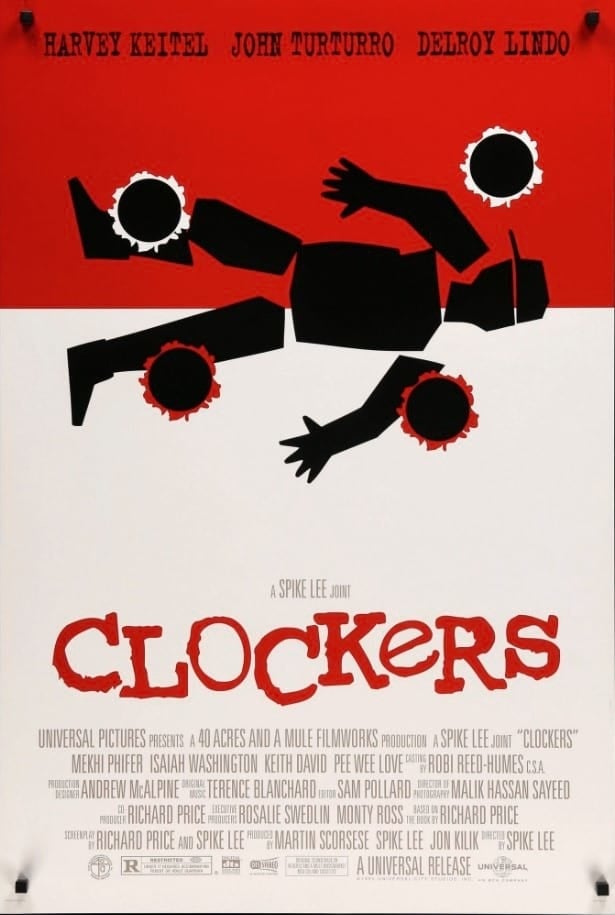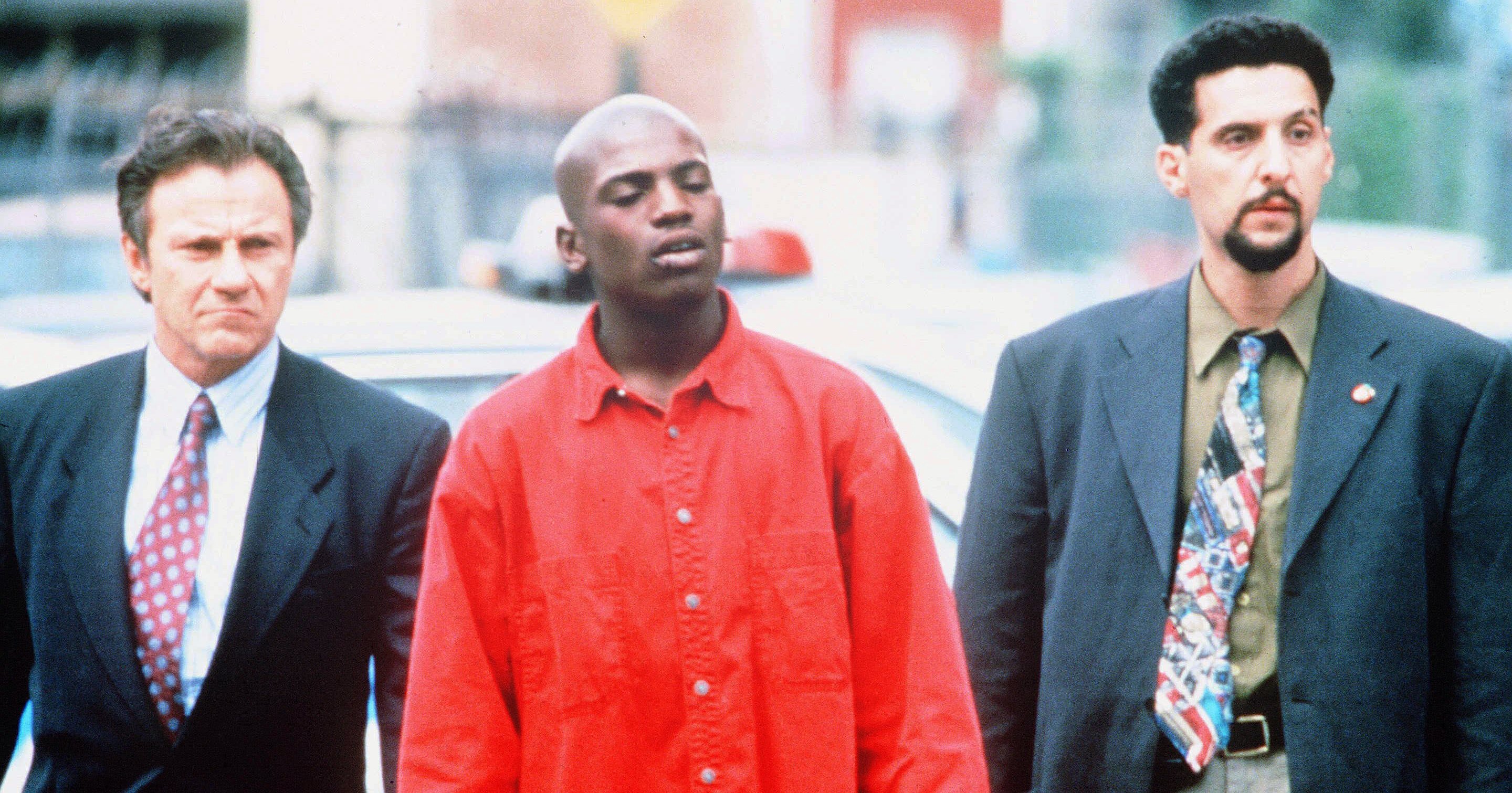
Clockers: Between “Rock” and a Hard Place
Director Spike Lee teams with first-time feature cinematographer Malik Sayeed to explore the devastating impact of crack cocaine on the inner city.
Unit photography by David Lee
Having infiltrated America's major cities, crack cocaine (or "rock") has spawned a complex and dysfunctional culture with its own laws, language and legacy. In the jargon of this limbo world, a "clocker" is a low-level runner (so named because the runner is on the street "around the clock") who serves as a conduit between dealers and addicts. Eager to make instant profits on the street, clockers spend their days preparing and distributing a product that exerts a vise-like grip on its obsessive users. But the quick cash often exacts a heavy price of its own; in any criminal enterprise, trust and loyalty are strong-armed aside by paranoia. Detailing the downward spiral of clocker whose time is running out, director Spike Lee's new film provides a stark, unflinching look at crack's deadly impact on a fictional New York neighborhood.

The film's somber tone is established during its startling title sequence, which presents a grisly series of stills that re-create actual autopsy photographs of drug-related murder victims. In preparing the sequence, Lee spent two weeks at the New York crime scene unit headquarters, where the lieutenant in charge allowed him to inspect what the officers refer to, with typical gallows humor, as the "family album." The pictures he selected were later re-staged with actors and photographed by his brother, David Lee. Recalls the director, "I saw the most gruesome autopsy photos you could imagine. Of course, it would have been in bad taste to use the actual photos in the film, so we duplicated them. We did this for effect; we wanted the viewers to know, before they even settled into their seats, that our film was about serious business. This movie is the exact opposite of the big-budget action films you see, which are full of cartoony killings. We weren't going to treat life cheaply in Clockers, because when you take a life, it's forever. There are too many kids being killed on the streets of this country, and it's no joke to me."
Given the opportunity to make such a statement to a mass audience, Lee has crafted a harrowing tale that is both visually inventive and remarkably realistic. The director's desire for authenticity was so great that he even recruited actual crack addicts for a montage sequence in which fictional dealers are shown peddling their wares. "We always had a six a.m. call time, and when we got to the location we'd see all of these crackheads scurrying around," Lee recounts. "Not everyone in the projects is a crackhead, but that element is a part of the environment, and I wanted to think of a way to incorporate them into the movie. One day, it was raining. We could have gone to a cover set, but instead I told my A.D., Mike Ellis, to round up some crackheads so we could work them into a scene. I think it was an effective tactic."
Adapted for the screen by screenwriter/novelist Richard Price from his own book, Clockers was originally slated to be directed by Martin Scorsese, with Robert De Niro starring. The story certainly presents a Scorsesean milieu, featuring betrayals, double-dealings, and a youthful protagonist in search of redemption. De Niro was to have played Rocco Klein, a veteran homicide detective who believes that a teenaged clocker named Strike is responsible for the shooting death of a convenience-store clerk — despite the fact that Strike's strait-laced older brother, Victor, has confessed to the crime. As the detective pressures Strike to confess to the murder, the clocker's relationship with his dealer sours inexorably, leaving him no place to turn.
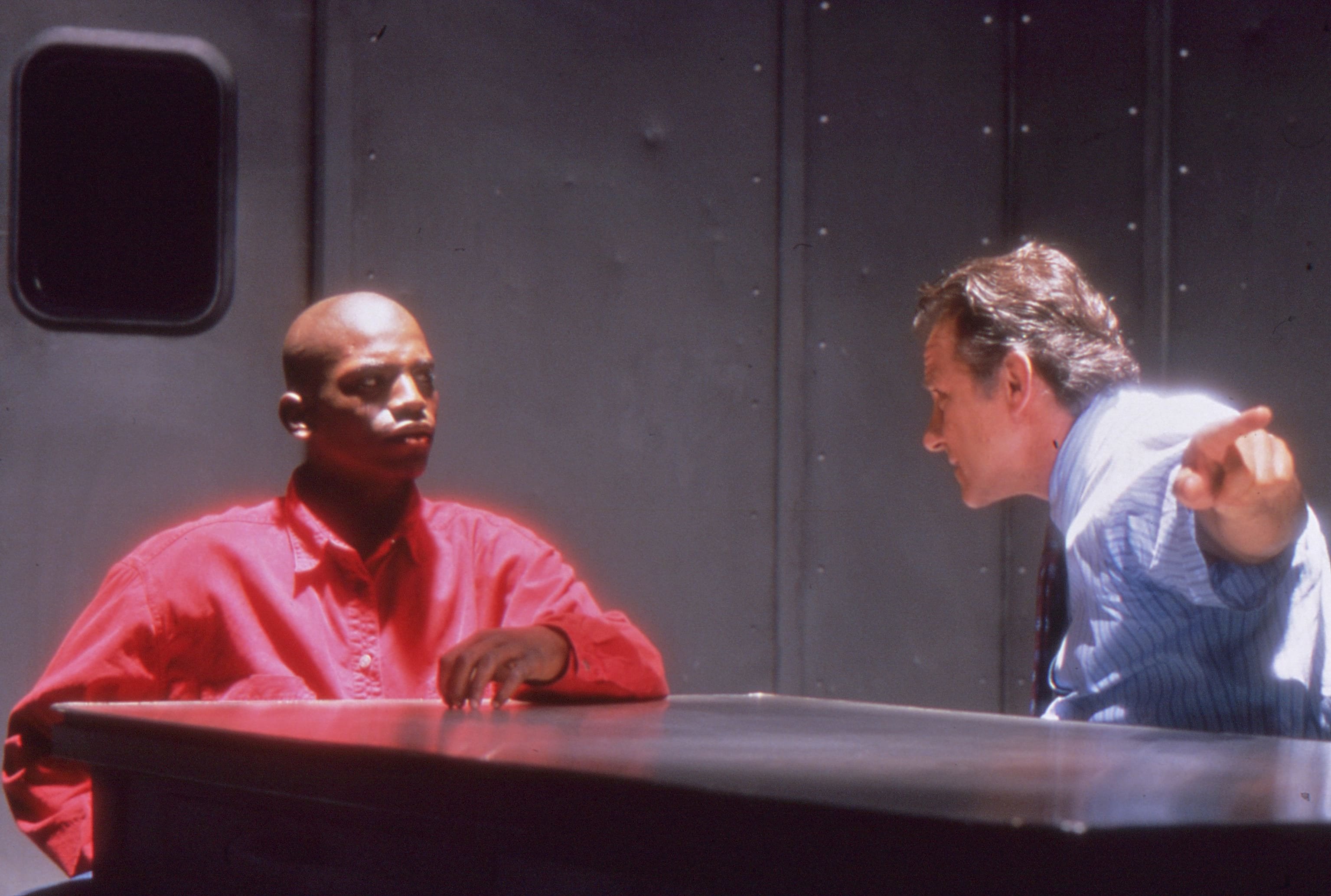
Before the film came to fruition, Scorsese and De Niro opted to pursue a different project, Casino (AC, Nov. '95), sending Universal Pictures on a search for another director for Clockers. Under Scorsese's auspices as executive producer, the studio offered the film to Lee, who felt the project was a perfect fit with his own sensibilities, concerns and aesthetics. "I read the novel and looked at the various scripts that Marty and Richard Price had worked on," says Lee. "But as I did, I started getting ideas about how to add my own vision while still being true to the book. I met with Marty, Richard and De Niro, and they all seemed to be in line with what I wanted to do, so I went ahead and made the movie." Lee worked out a new draft of the script with Price, casting Harvey Keitel, a veteran of four Scorsese films, in the role of Rocco Klein. The players also include a pair of Lee mainstays: John Turturro (Do the Right Thing, Jungle Fever, Mo' Better Blues) as Klein's partner, Larry Mazilli, and Delroy Lindo (Malcolm X, Crooklyn) as crack dealer Rodney Little, whose neighborhood grocery store serves as a front for his drug-running operation. The pivotal role of Strike went to new face Mekhi Phifer; Isaiah Washington essayed the role of Strike's upstanding brother, Victor; and another first-time actor, Thomas Jefferson Byrd, portrayed Errol, Rodney's drug-addled henchman.
Phifer and Byrd weren't the only newcomers to benefit from Lee's patronage. In a rare move that bucked Hollywood's traditional system of personnel advancement, which often occurs at a glacial pace, Lee decided to give a former member of his electrical crew, 26-year-old Malik Sayeed, the promotion of a lifetime to director of photography. A 1990 graduate of Howard University, Sayeed earned his degree in film studies and later attended the Maine Photographic Institute, where he benefited from courses taught by cinematographers Ralf Bode, ASC, Rob Draper and Billy Williams, BSC. "A major part of my education was reading any book I could find on motion picture photography," he says. "Reading was my foundation; it really helped me to understand the actual process during my practical training."
“I knew Malik might not get another chance for a long time, and I didn’t want him to be in video hell forever, so I rolled the dice and gave him a shot.”
— Spike Lee
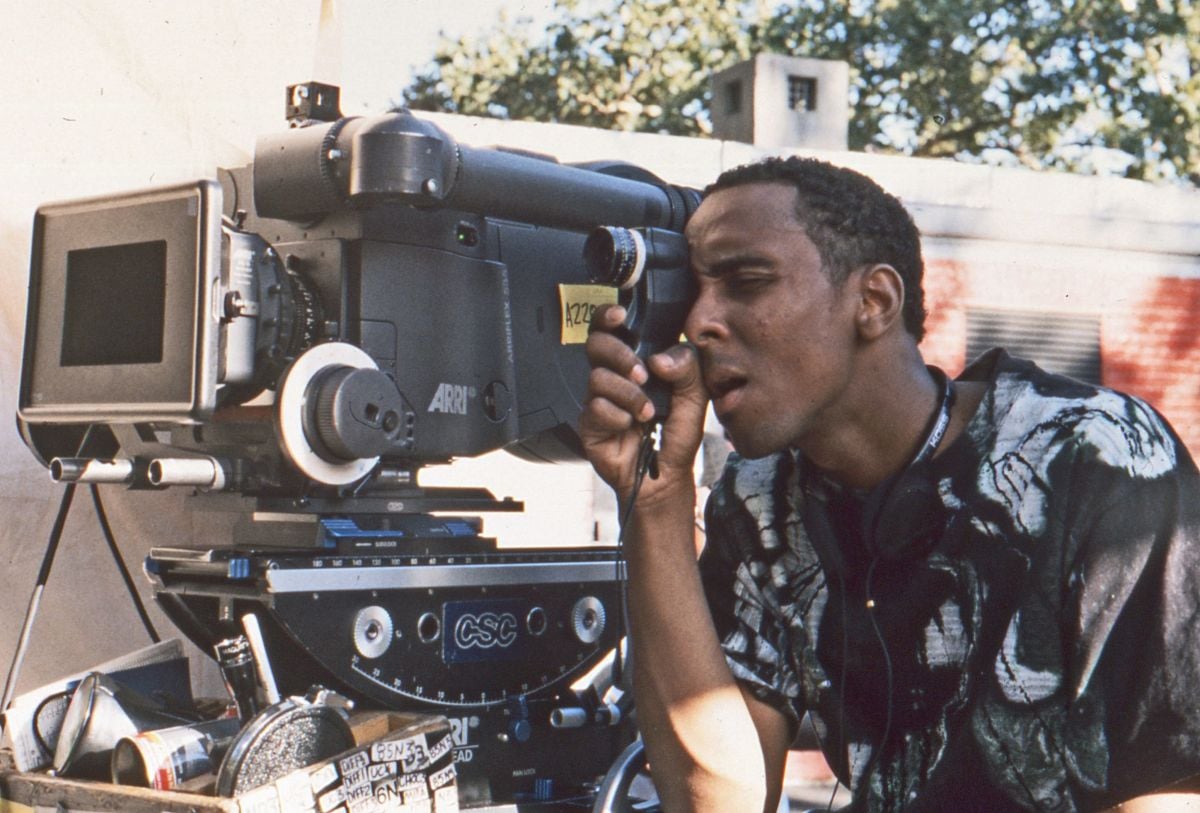
Having worked his way into IATSE as an electrician in college, he was later able to gain a position on the electrical crew for Lee's epic biopic Malcolm X. Of his entry into the film business, Sayeed relates, "A friend of mine who was an electrical intern introduced me to the gaffer on Malcolm X, Charlie Houston, and I just kept hanging around until one day they finally needed some extra people. That film was shot in New York in the dead of winter, and it was seriously cold outside. But I was just thankful for the chance to watch Ernest Dickerson [ASC] work. When I went home at the end of the day, I spent all of my free time reading up on films, watching videotapes and making notes."
Sayeed's studious attitude paid off with a promotion to best boy on Lee's subsequent film, Crooklyn. Prior to that assignment, he had gaffed a few smaller projects for Crooklyn cinematographer Arthur Jafa (a.k.a. A.J.), whose credits include Daughters of the Dust. "I had also bought a pair of cameras, a Bolex and an ARRI 2C, and was shooting anything I could," says Sayeed. "After I worked on a docudrama with A.J. called Seven Songs for Malcolm X, we became really tight. He's definitely influenced my style. We both try to express our creative energies through cinematography, in the same way a musician uses his instrument. I get visual ideas while listening to music, but not in a physical sense; it's more an emotional tone. I especially admire Thelonious Monk. With Monk, it's all about timing, and where to place the emphasis. He broke all the rules. Monk took what he learned and built something else; he never said, 'I can't do this.' I applied that attitude to Clockers."
In the days before his big break, Sayeed compiled an impressive reel of work which included his collaborations with top music video director Harold "Hype" Williams. After watching the young cameraman's reel, Lee invited Sayeed to shoot a series of television commercials with him. The director soon decided that Sayeed had what it took to tackle a full-length feature.
Lee recounts, "When Clockers came around, I talked to a lot of cinematographers, including Janusz Kaminski, who was already committed to another project. Finally, I said, 'Wait a minute. You've got to cultivate your own.' I knew Malik might not get another chance for a long time, and I didn't want him to be in video hell forever, so I rolled the dice and gave him a shot."
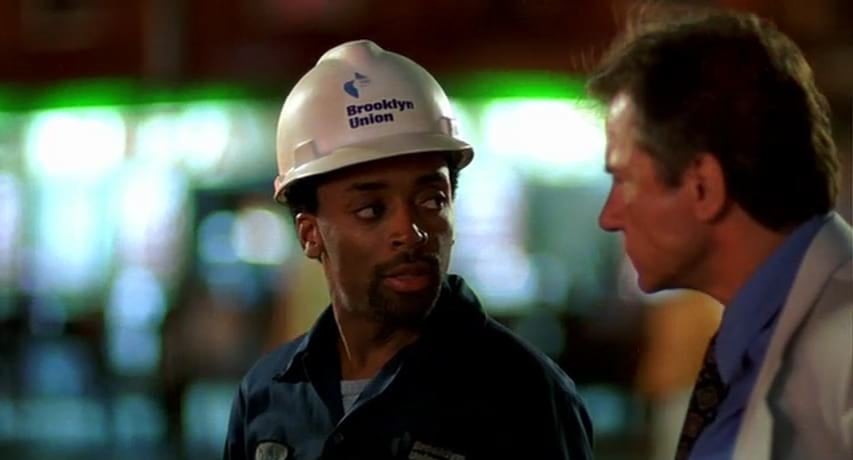
The director does admit that he is still adjusting to life without Dickerson, who served as his right-hand man on five pictures — all visual stunners. "When I was working with Ernest, if I got lax in saying where the camera would go while we were setting up a shot, it never mattered, because he always put the camera exactly where it was supposed to be," says Lee. "Now that Ernest has gone off to be a director, I can't use him as a crutch anymore. Malik is more inexperienced, so he was thinking primarily about the lighting on this film. I had to step up and do what a director is supposed to do — set up the camera and design the shots. I have to say that I was really fortunate to have done a lot of films with Ernest, because I really benefited from his visual sense."
“What I like most about Malik's style is that it’s uncontaminated. Some cameramen get bogged down in thinking about what you can and can’t do. To those guys, it’s just a job.”
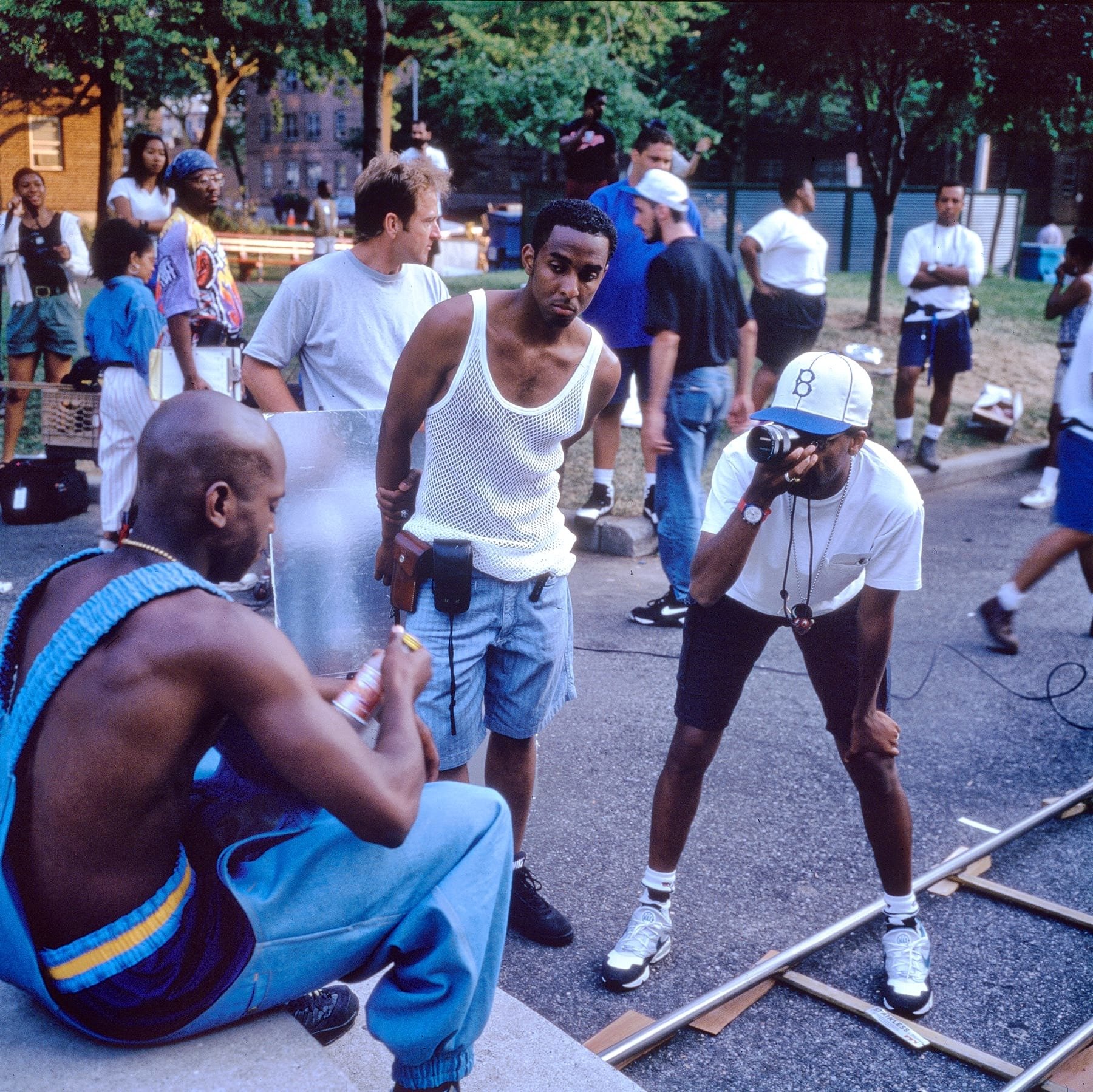
Asked to assess the talents of his new cameraman, Lee offers, "What I like most about Malik's style is that it's uncontaminated. Some cameramen get bogged down in thinking about what you can and can't do. To those guys, it's just a job. I want to work with people who think like artists, not just technicians. That's not to say that Malik doesn't know his stuff; he's really on top of the technology. He knows about all the new lights and equipment that's out, and he wants to try new and interesting things."
This sense of creative chutzpah is certainly apparent in Clockers, which offers a cornucopia of unusual ideas and techniques. The most startling was Sayeed's gambit of shooting a significant portion of the film on Kodak's 5239 film stock, an Ektachrome reversal film that isn't even mass-produced. The stock, which is rated at 160 ASA, was once used in a 16mm incarnation during the days before news reporters shot exclusively on video. Lee concedes that he had "never even heard of the stuff" before Sayeed brought it to his attention. According to the cinematographer, the only reason Kodak still makes the stock is that NASA and the U.S. Air Force continue to use it. "When the Challenger space shuttle exploded, NASA had a lot of video cameras on board, along with one film camera, and the only one that survived was the film camera," he says. "So NASA started putting more and more film cameras on the shuttles. They used this Ektachrome stock because their labs had been set up to handle it for years. When we first started shooting Clockers, we discovered that 5239 doesn't even have edge numbers on it; we had to have Kodak make up a special batch with numbers for us. But once we got rolling, everything went smoothly. We processed it in a negative bath, and then printed from there on standard Eastman print stock."
Sayeed had tested a wide variety of stocks during eight weeks of pre-production, searching for one that would reflect his own vision of life in the projects of New York. He even sought the advice of renowned film stock alchemist Robert Richardson, ASC, who had read a treatment of the film while Scorsese was still attached. "He was very, very helpful," Sayeed says with admiration. "Because he had read an earlier version of the story, he had a lot of opinions. He stayed on the phone with me for hours; I was really grateful that he took the time to talk to me."
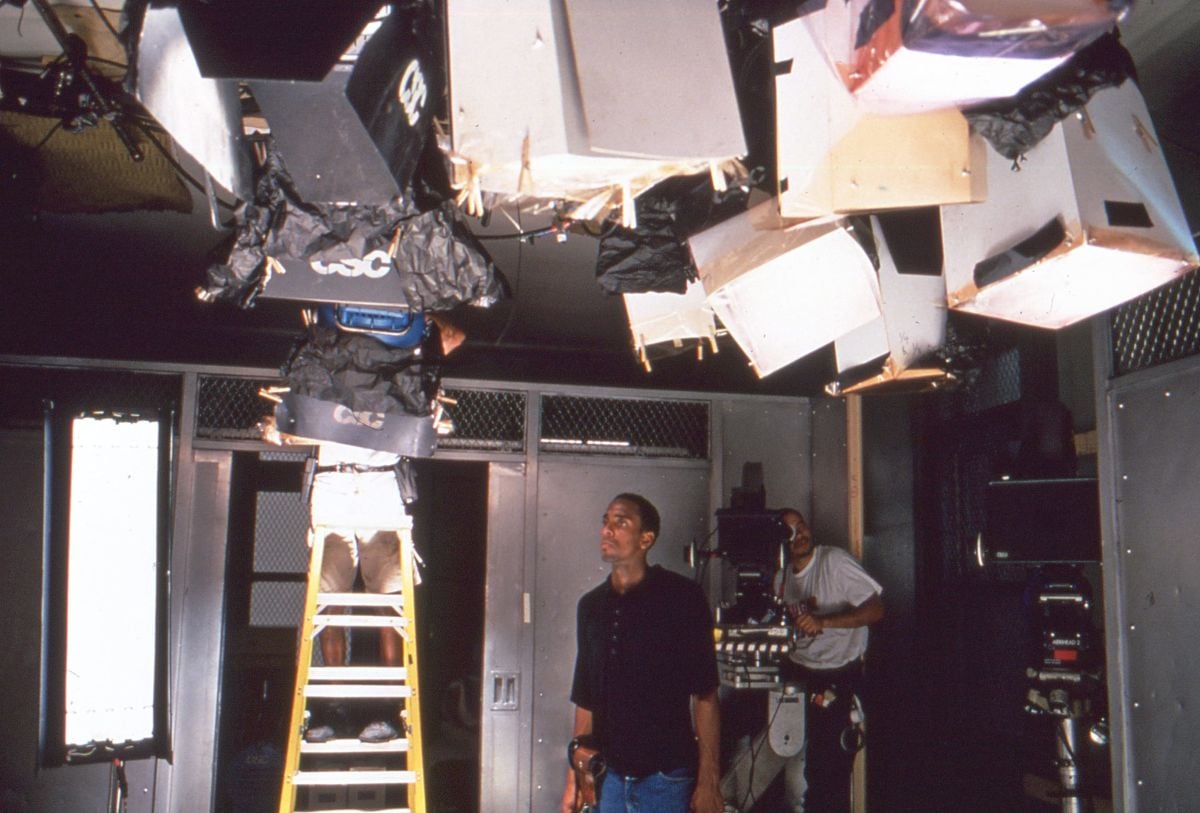

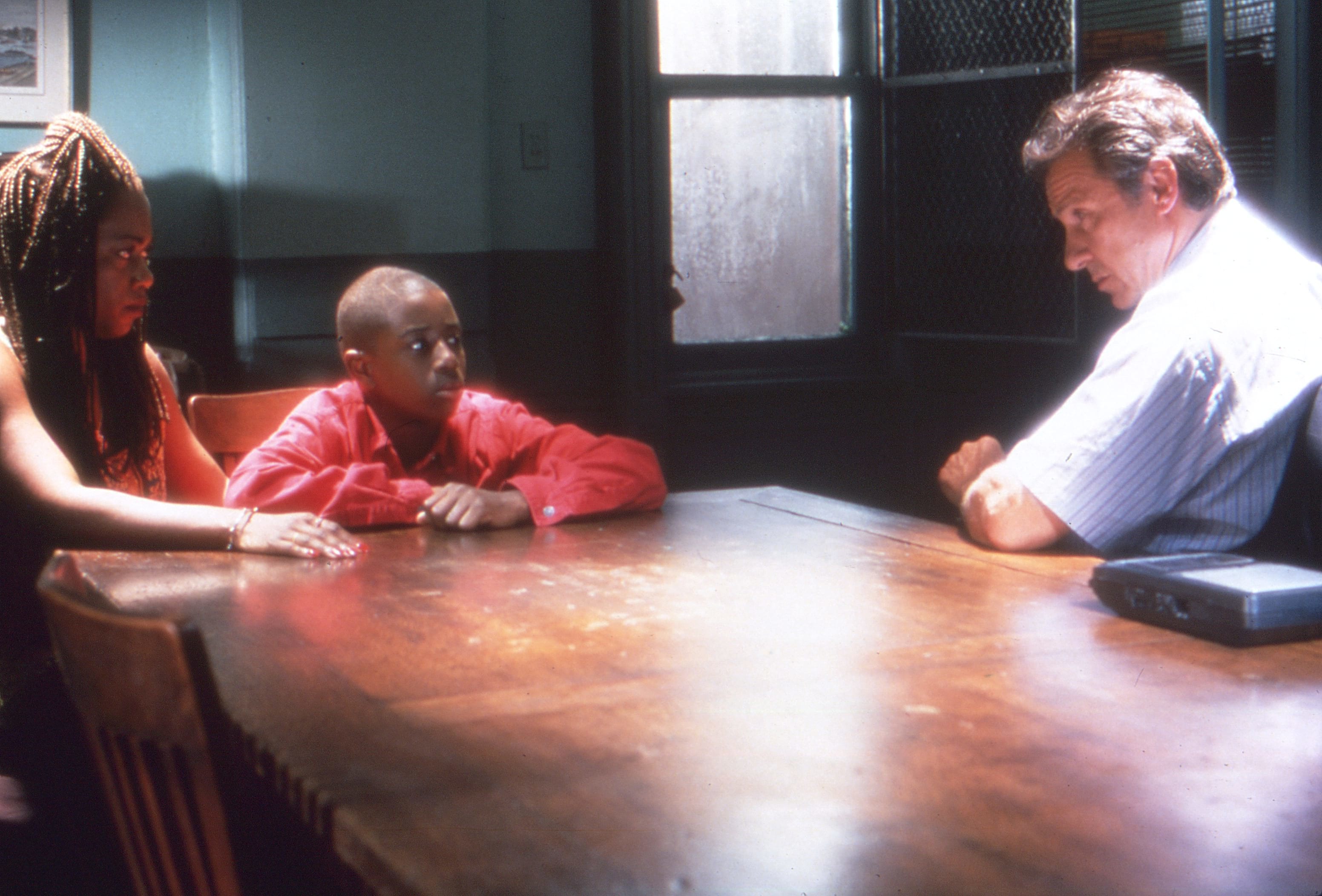
In discussing the look of the film, Lee and Sayeed referenced a few other films, such as the raw, urban cop dramas Bullitt and The French Connection [AC, Feb. '72]. But Sayeed testifies that the visual style of Clockers was more influenced by still photography. The production designer, Andrew McAlpine, had introduced the filmmakers to a book called Juke Joint, by Bernie Imes, which presents photographic essays on rural areas in Mississippi. "Imes shot photos of little clubs that are barely standing," says Sayeed. "The designs on the walls of these places are very interesting. We used that look at Rodney's store and in Strike's apartment. You can find the same visual style in Brooklyn, Senegal and the Caribbean — colors like bluegreen against black and yellow, in a variety of different patterns. Some other inspirations for me were Bruce Davidson's book Subway, and two books of photos that Leni Riefenstahl shot in Africa. Her politics are a matter of debate, but her aesthetics are incredible."
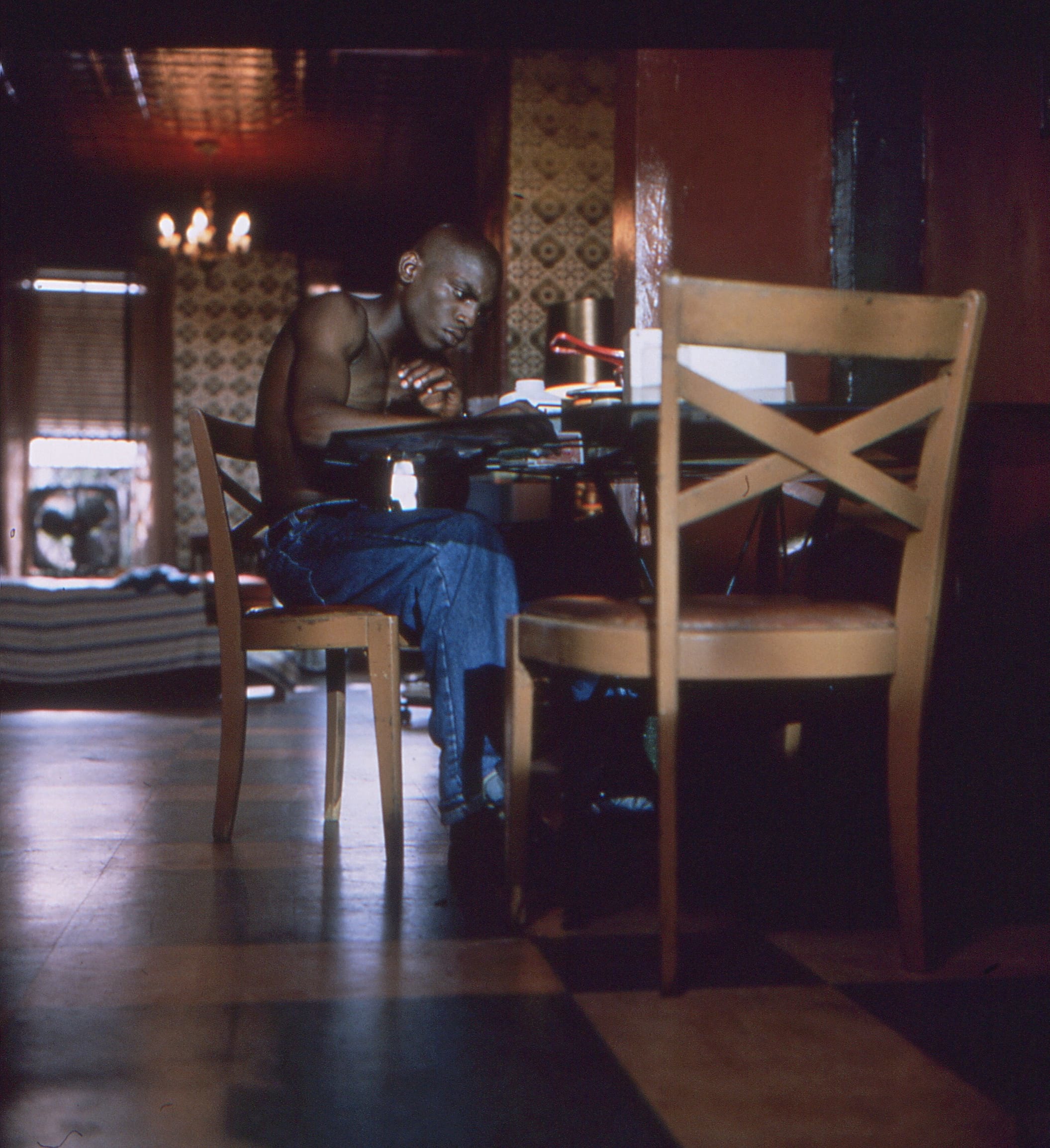
Both Lee and Sayeed felt that a unique look was needed to convey a true sense of daily life in a New York housing project. Working on location at the Gowanus Housing Project in Brooklyn (rechristened as the Nelson Mandela Projects in the film) they agreed that the gritty look they sought would be difficult to achieve using today's clean, sharp film stocks, and decided that it was worth the risk to shoot scenes in the projects on 5239. Lee points out that while a few sequences in Steven Soderbergh's recent film The Underneath were shot with 5239 and cross-processed, Clockers represents the most significant use of this technique in recent memory; the director estimates that approximately three-quarters of the movie was shot on the reversal stock. He admits, however, that the decision gave him a few sleepless nights. "At one point, some experts from Kodak showed up on the set and said, 'We don't know if this negative's going to last.' There was some question about the fixer process, and they wanted us to stop shooting with it. We went ahead anyway, but I did a lot of praying."
The potential problem with the fixing process was solved by Joe Violante, Vice President of Producer Services at Technicolor New York. Violante, a 25-year veteran who had done the cross-processing on Soderbergh's film, was eager to help Sayeed and Lee with their project. "Almost five years ago, Technicolor New York began to experiment with cross-processing the reversal films in a negative bath," he says. "When we first started doing this we were just using stills, and we were working mainly with commercial cinematographers. At first, we didn't have such great success, because the process was cooking the reversal. Slowly but surely, we worked up to 400, 1,000 and 5,000-foot rolls. Through trial and error, I discovered that I could create a stabilized product by re-fixing the negative. When Clockers came along, we felt ready to jump right into it, but we were still very careful. Malik and I personally supervised every frame, and we isolated this film from the others Technicolor was handling at the time.
"As far as the results are concerned, I love the way this film looks," Violante concludes. "I think it's very unique."
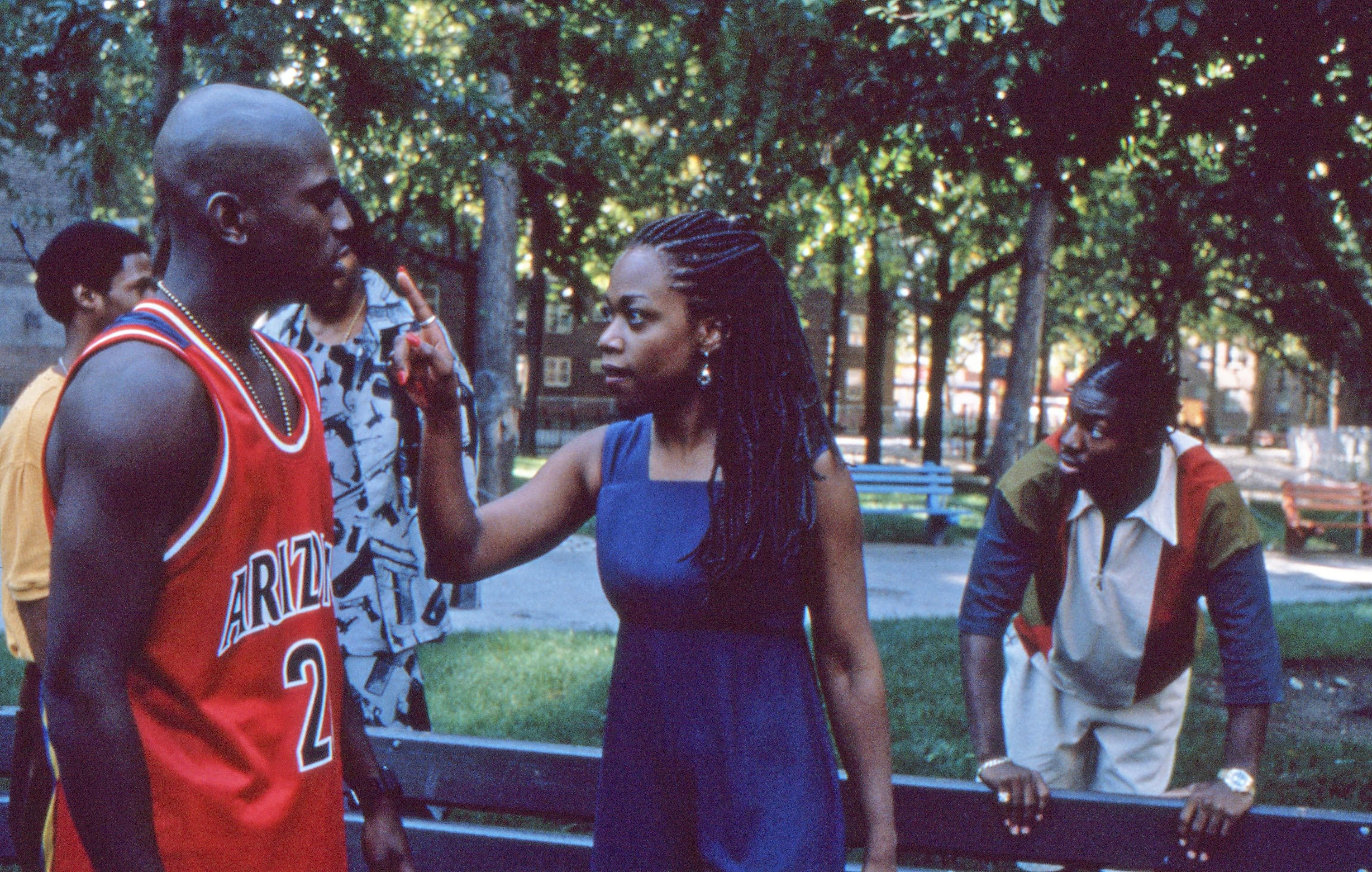
Kodak Production Account Executive Mike Brown, who handled the Clockers account, adds his own note of caution to anyone who might want to try the cross-processing technique. "Anyone attempting to use such a process on a motion picture should perform extensive testing with the lab, and should also consult Kodak," he says. "The special films used on Clockers had to be special-ordered well in advance. Kodak still considers cross-processing to be a highly unconventional approach, so it's better to be safe than sorry."
Looking at the experiment from a historical point of view, Sayeed points out, "Filmmakers were trying this kind of thing all the time in the Twenties, Thirties and Forties, because nothing was set in stone yet about how things should be done. Everybody was using different processes. Still, I did run up against a wall when I first suggested this technique. One big lab, whose name I won't mention, told me, 'No way, never, we can't believe you're going to do this.' But Technicolor New York and Joe V. went the extra mile for me. Some people still think I'm crazy for doing it, but I felt it was the best approach for the story. 5239 was the one stock that was best able to convey the atmosphere of the locations we were using. The standard Eastman negative didn't have the emotional weight that this technique gave us. I saw the film process itself as a metaphor for what exists in the ghetto; you have this really messed-up environment, but there's still a beautiful culture within that environment. Likewise, the 5239 has a completely raw grain structure, but it also has intense, vivid colors. It really records red and purple, so we took advantage of that. In one scene near the end of the film, for example, Spike had practically everyone in the frame dressed in red."
Sayeed admits that the stock presented some photographic challenges. With little under- or overexposure latitude, the cinematographer had to perform extensive tests to zero in on the relatively narrow exposure range. "There were a couple of scary moments, but in general we had no problems," he maintains. "The most difficult situations were strong sunlight and shade. Those are tough situations even if you're shooting normally, but our strategy really made it extreme. I was going for a very naturalistic level of fill light, because I don't like to use fill to the point where it looks like fill. It also helped to try to shoot in confined areas; I didn't want to confine the story, but things got tougher when we had really big shots. I did a lot of exposure pulls on this film, and there were a few times when I made little mistakes. For example, there's a scene in which the two detectives go to arrest Rodney at his store. The shot starts outside, where it's really bright, and then goes into the dark interior. We definitely had to do an exposure pull, but I think it was a little extreme. The street was very hot, but I think I came down a bit too much. This stock did lend itself to exposure pulls, though, because the contrast is so extreme that you can go a little further without seeing a noticeable shift; most of them are invisible."
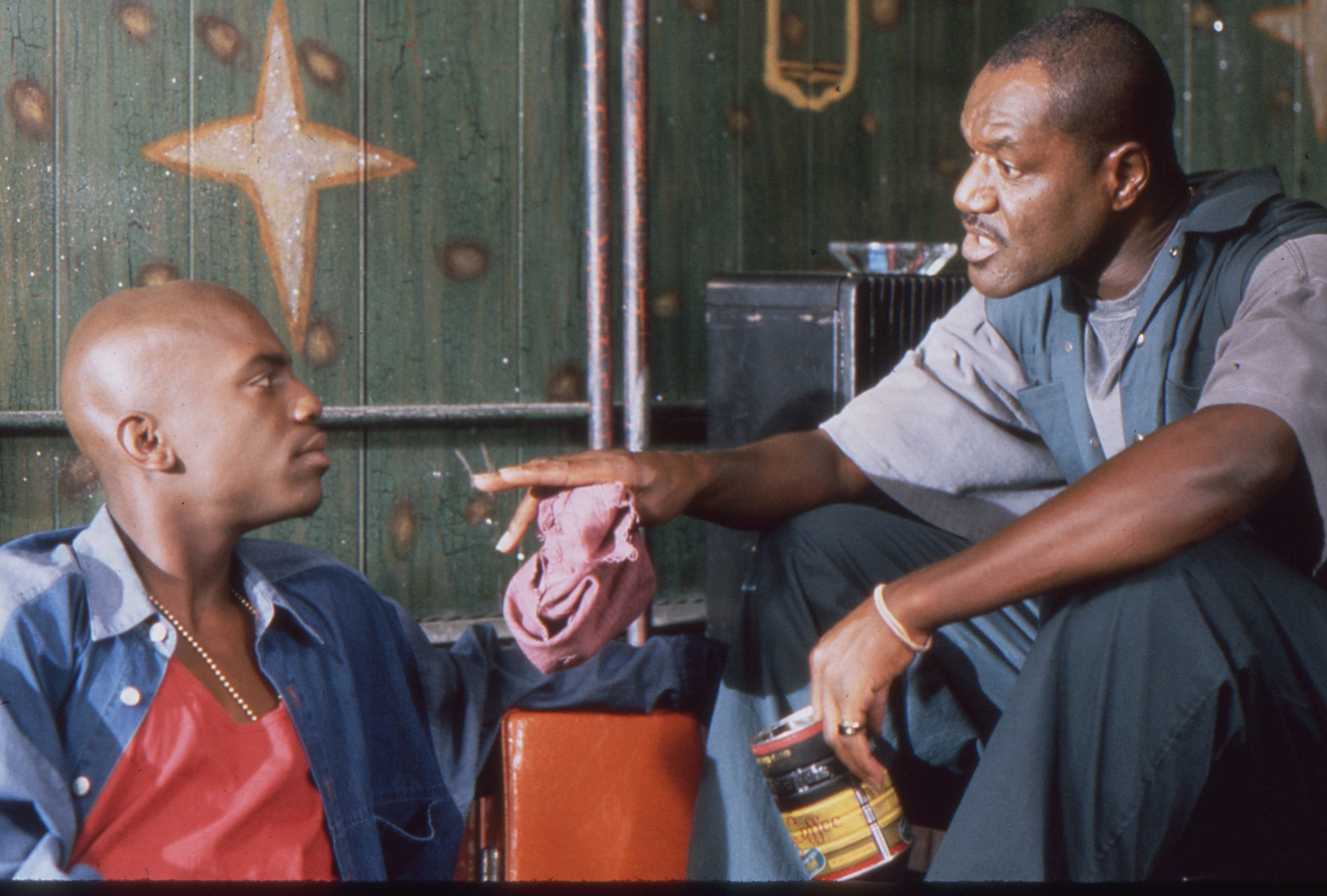
The filmmakers applied a variety of other stocks as well, depending upon the requirements of a scene. In addition to the 39, Sayeed tapped 5298 for night sequences, 5248 for scenes in the police precinct, and 93 for select shots. He also cross-processed 7251, a 16mm Ektachrome reversal film, for a surreal flashback in which Rodney tells Strike about the first time he killed a man.
To further heighten that sequence's queasy tension, Lee filmed several shots with an anamorphic lens. Although Clockers was shot in 1.85 to exploit New York's vertical skylines, Lee felt that the subtle use of anamorphic would heighten the "shock value" of certain scenes. He had previously employed this strategy for a 20-minute uncorrected anamorphic sequence in Crooklyn, with highly controversial results; the squeezed images prompted Universal to prepare printed disclaimers at theaters exhibiting the film. Still determined to defend his choice, Lee says, "People had problems with the anamorphic sequence in Crooklyn, but in that film I was trying to show the difference between life in the city and life in the suburbs. I wanted to present this distorted suburban world through the eyes of the little girl, Troy, who had grown up in a completely different environment. If I had to do it again, I'd still do it the same way.
"On Clockers, we just used anamorphic for very specific shots. For the Rodney flashback, we used Clairmont's Swing-and-Tilt lenses in combination with anamorphic, which gave us an unusual perspective. I didn't want to do the whole film in anamorphic, because I don't like going through the correction process."
Sayeed's use of moving streaks of light added to the strange quality of this flashback. "I had two of the electrics hold lights and pan them like searchlights across the actors' faces," he reveals. "Were trying to achieve a voyeuristic point of view. We wanted to show real-life consequences in a very graphic way."
The film's other flashback sequences were shot in equally interesting ways. For scenes detailing Victor's past, Sayeed used an Ektachrome still photography reversal film, 5017 (ASA 64), which Kodak spliced into 1,000' rolls that would run through an ARRI 535. "The pitch worked fine in the ARRI camera," says Sayeed. "I knew I could get the look I wanted, but it was a matter of whether the lab would be willing to cross-process the film. We used the Swing-and-Tilt lenses on some of the other flashbacks as well, such as one in which Harvey Keitel appears in another character's flashback."
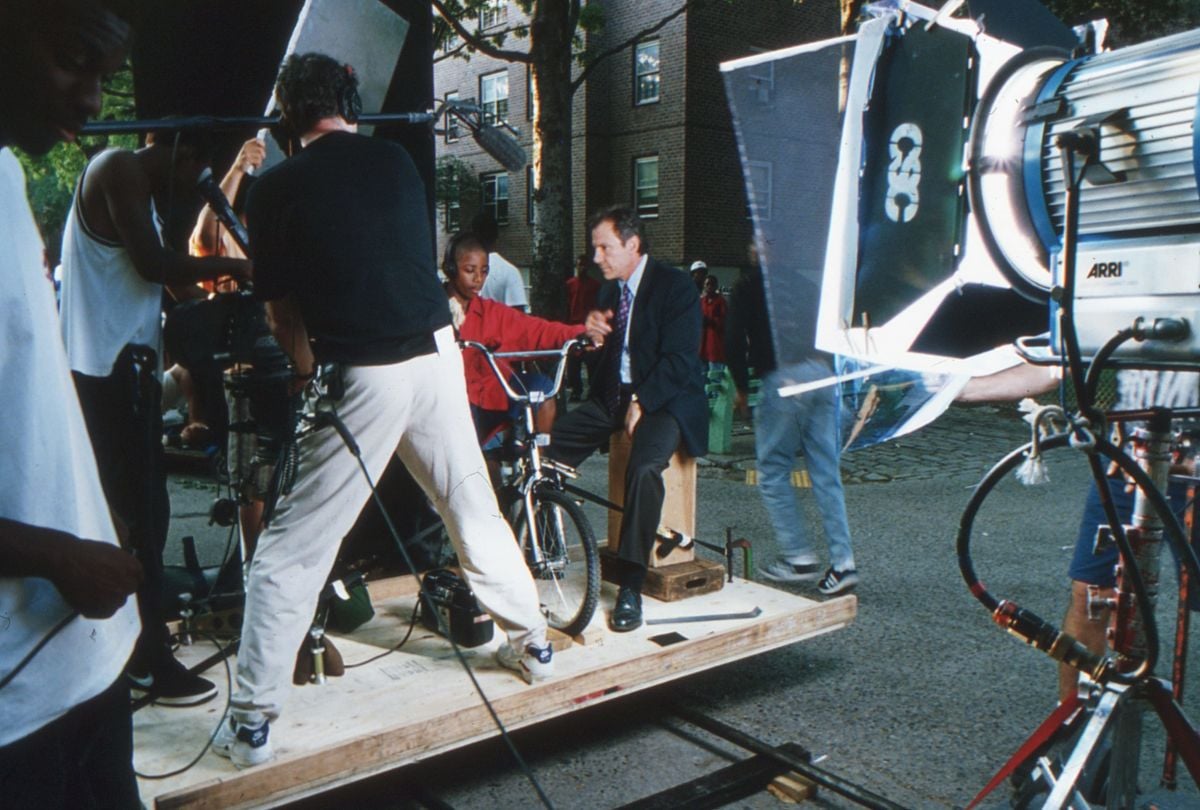
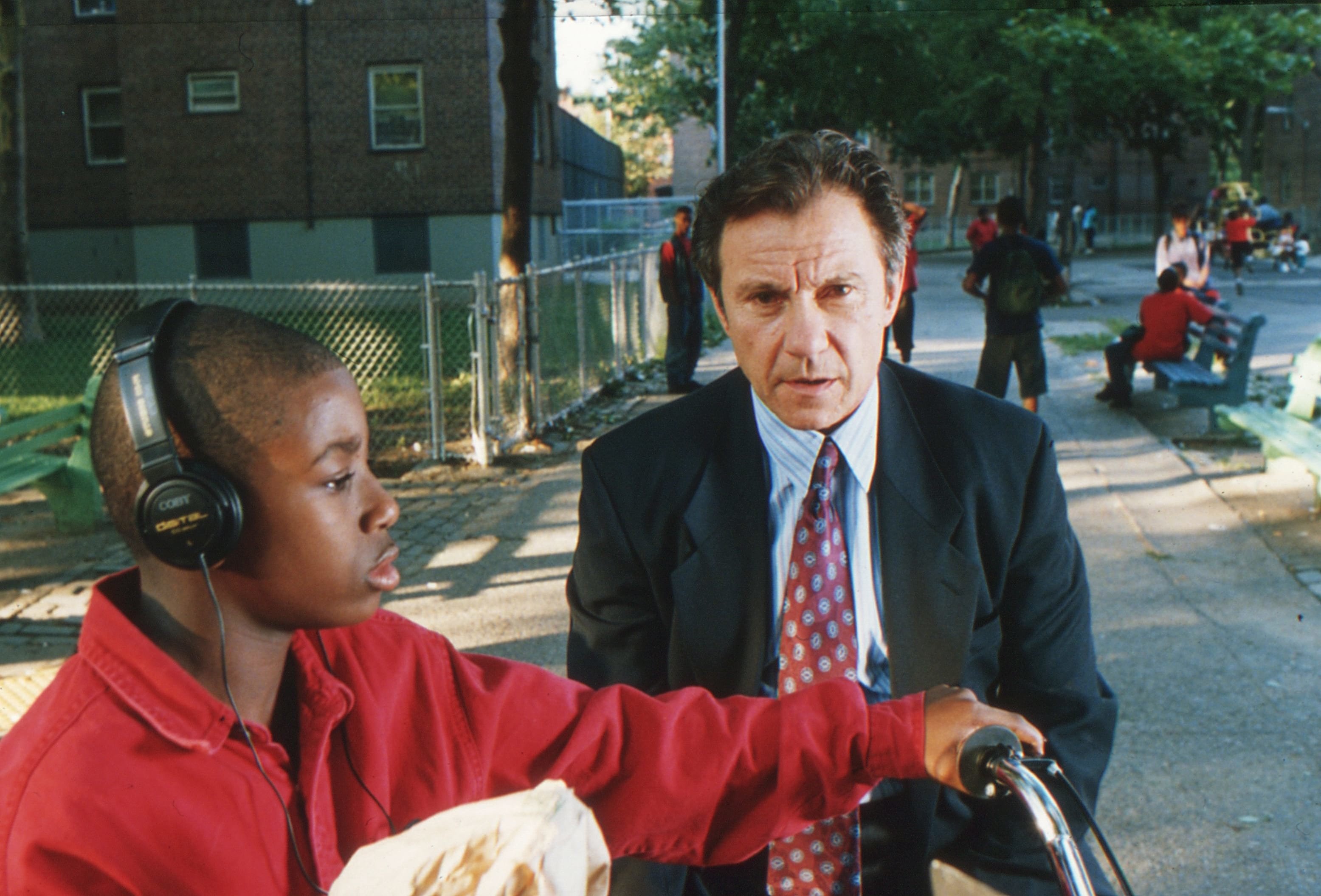
According to Lee, the idea of physically placing Keitel's character in a small boy's memory of a shooting incident was culled from the classic film The Boston Strangler, shot by Richard H. Kline, ASC. In the scene, a police investigator revisits the past with serial killer Albert De Salvo (Tony Curtis). "Martin Scorsese is one of the greatest film buffs ever, but after he saw that sequence he got all excited and asked me, 'How did you think of that, Spike?!!'" Lee recalls with a guffaw. "I said, 'Marty, c'mon, it's from The Boston Strangler.' I was kinda surprised that one slipped by him!"
Lee further enhanced this sequence by employing a trick he has used to great effect in previous films: placing the camera and actors on a moving dolly to create a strange, otherworldly feeling of movement. In one particularly eye-catching shot during the boy's flashback montage, Keitel seems to float along in mid-air as the boy rides his bike. Sayeed explains, "To do that shot, and others like it, we used a plywood sled built by the key grip, Bobby Andres. It's a platform setup made out of Speedrail, plywood, 20-foot lengths of black pipe and some wheels. You run two pieces of pipe, which connect together with a few twists of an Allen wrench. The pipes are on top of wooden planks, and the sled goes on top of the pipes. It's very, very smooth, and you can make it run as far as you want by adding more pipe. You can even put another dolly on top of it; it's big enough to handle two Pee-Wees. And if you want the platform to be bigger, you just add planks. For the bike scene, we mounted the bike and lights on top of it and put the camera on sticks."
Commenting on his frequent use of such dolly shots, which can be also seen in Mo' Better Blues, Jungle Fever and Malcolm X, Lee states, "It's just a different way of having characters move. I think the best application of this technique prior to Clockers occurs in Malcolm X, during the scene in which Malcolm is on his way to the Audubon Ballroom. I did research and found out that Malcolm seemed to know he was going to be assassinated that day. The dolly technique really fit in with the mood of that scene; it created a weird sense of disorientation."
Lee and his team used a variety of methods to add movement to other scenes. A Steadicam, operated by John Corso, was used several times to follow Strike's movements, and the film is bookended by dramatic Louma Crane shots — an establishing overview of the convenience store, and a climactic shot of a slain clocker. For an early sequence that tracks the movements of the clockers on their daily routine, the filmmakers covered the action with long lenses, in a shaky style that resembles police surveillance. "We shot that scene with three cameras” notes Sayeed. "We positioned ourselves as outsiders peeping in. To get the look we wanted, we did a lot of rack-focusing, hand-zooming and swishpanning."
The lively camerawork in Lee's films is not without a philosophical basis. Practical concerns always come into play, but the director maintains that modern times call for modern methods. "I want vibrant energy, movement and life in my films," he explains. "Shooting any other way, for me, is too much like television. It costs $7.50 to see a movie today, plus extra for parking, popcorn and soda. If you don't give the audience something interesting to watch, they're going to stay right on that sofa at home, where they have 150 channels to choose from."
The advantages of this forward-thinking stance are evident throughout Clockers, even during exchanges of dialogue. Rather than simply ping-ponging between talking heads, Lee often incorporates movement into what would otherwise be standard setups. A good example from Clockers is a conversation between Klein and Strike, which takes place on a pancake-shaped concrete platform in a neighborhood park. As Klein tightens the screws on Strike, trying to coerce a confession, the camera revolves around them, capturing the essence of their cat-and-mouse relationship. "As soon as I saw that big pancake, I pulled out the circular dolly tracks," Lee notes with a chuckle.
The director's fondness for dialogue led him to shoot most of the film with two cameras running simultaneously — the ARRI 535 and a Moviecam Compact. "It can be a drag shooting two people talking, and a lot of times actors give their best performances when they're reading their lines offscreen," he says. "Actors love it when you use two cameras, because they don't have to wait for the turnaround."

Sayeed agrees that the two-camera setup preserves the spontaneity of performances, but he notes that this technique does come with a price. "The cameras are usually pointed almost directly at each other, so the optimum light placement is always in the other camera's shot," he points out. "It's a major challenge to light both angles effectively."
Although Lee has been faithful to ARRI since his student days at New York University, Sayeed was interested in testing out the Moviecam unit. "Spike has used ARRIs since his earliest film, Joe's Bed-Stuy Barbershop, and he's got a good relationship with the company," Sayeed notes. "That was fine with me, because the ARRI 535 is an excellent camera. But I also wanted to try the Moviecam, because it's lightweight and very versatile. I knew we were going to be doing some handheld in this movie, and I thought the Moviecam would be easier on the operator, Gary McCloud. It's the camera of choice for Steadicam operators. It's also versatile in terms of where you can put the magazine; you can configure it so it's much smaller than the 535.
"You can also do speed changes with the Moviecam, and we did one for the scene near the end of the film in which Strike is trying to avoid a confrontation with Errol, Rodney's henchman. We shot Mekhi Phifer on our sled setup in slow-motion as he walked along in the park, and we switched to real-time after he spotted Errol and tried to hide by a fence. It was subtle, but it looks pretty good. We also used a speed change for the flashback where Victor is working at a burger joint."
Except for a few brief sequences, Sayeed kept his lenses unfiltered throughout the shoot. "Most of the film was shot with Zeiss Superspeeds, mainly primes. We had an Angenieux 25-250, but we didn't use it very much. We also used 300, 400 and 600mm Nikkor lenses. Our standard lens was a Zeiss 25mm prime. I like being at 35 for normal shots, but Spike prefers to go a little wider at 25. Another lens I like is the 65. For slightly wider close-ups we used the 65 or an 85, and for extreme close-ups we used a 135."
One particularly eyecatching shot was executed with the help of a Zeiss macro lens. As detective Klein grills Strike in an interrogation room at the police precinct, the filmmakers cut to a giant closeup of Keitel's eyeball, which engulfs Strike's reflection. "The thing about the macro lens is that once you get in really tight, it stops down automatically, because there's a macro exposure compensation," Sayeed notes. "You really have to pump in the light, so it was blazing in that small room. The lights were on stands that were placed outside the curvature of the reflection in Harvey's eye, which became almost like a fisheye lens; it took in almost everything in the room."
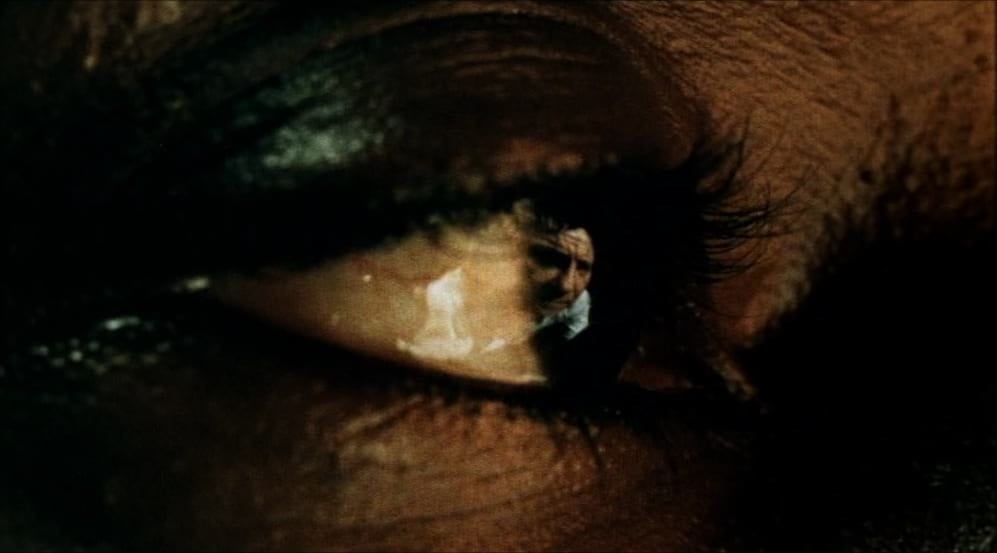
During the film's other interrogation sequences, Sayeed and Lee paid homage to Robert Richardson by emulating the hot, haloed look he pioneered in the Oliver Stone film JFK. To create the "Richardson aura" around the actors, Sayeed loaded up the ceiling of the interrogation room with HMIs, supplementing the look with Kinoflos placed on the floor. He also added a Fogal net to the lens for a touch of filtration. "It was unbelievably hot in there; everyone was sweating," he recalls. "It doesn't look that hot on film, because of all the blue-grey metal in the room, which lent everything a cool feel. But the heat was so intense that Harvey's hair started smoking! I had told the makeup department not to put any grease in his hair, but they did, and his head had curls of smoke coming off it. I wasn't trying to burn anybody, but I thought the look was appropriate for those scenes. We were shooting with the 5239, and it really got the feel I was after. We bounced the lights off some boards I placed on the interrogation table. I was getting so much ambient light off the bounce that I didn't need to add anything to the actors' faces."

The interesting qualities of the 5239 stock are especially apparent during one of the interrogation scenes, in which Klein questions a young boy about his role in a shooting, under the watchful eye of Andre, a neighborhood cop intent on keeping the drug trade in check. Sayeed split his lighting in the scene, creating a strange, almost matte-like separation between the foreground characters and the cop in the background. "The 5239 has some really interesting densities," the cinematographer attests. "You can get different tones and contrasts based on your exposure. With the 5239, there are some places underneath the 18 percent mid-range where you can get some unique tones. In the scene involving Andre, the lighting was a little bit different on him — a little bit 'down' — and it produced that odd look of separation."
Elsewhere in the film, Sayeed's approach was dictated by the desire to shoot the locations as naturalistically as possible. Most of the film's night scenes, for example, were shot without the help of any movie lights. "A lot of our setups made use of existing practical lights — even some of the interiors, such as the bar where Strike and Victor meet early on in the film. For street scenes at night, I had the art department and the electrical crew change a lot of the bulbs in the storefronts to high-output fluorescents. That approach felt more appropriate to me than just washing the entire street with Muscos. Kodak's 5298 stock helped a lot in those situations, because it's got incredible latitude. I actually pushed most of the night stuff one stop; I could even push it two stops without it breaking up."
For a scene in which a detective on drug detail confronts Strike in the park at night, Sayeed used a combination of sodium-vapor and mercury-vapor lights to augment the existing fixtures. "The sodium lights are not high-output, but with the 98, it was the most appropriate strategy," he says. "Mercury-vapor lights go green on film; it's even slightly apparent to the naked eye. We played with the fact that the film stock was not going to compensate for the green content in these gaseous-output lights. We put a cool white fluorescent tube in the background and just let it go. We did that in a number of other scenes as well, just to add some visual pop. Robert Richardson did a similar thing for the supermarket sequence in Natural Born Killers. He used a more neon green, while we were trying for a blue-green. If you use an 85 [filter] and a cool white light with tungsten-based film — or if you put an 85 on the lights — it will go straight green. But if you take the 85 off and let the cool white go, it will go bluish green.
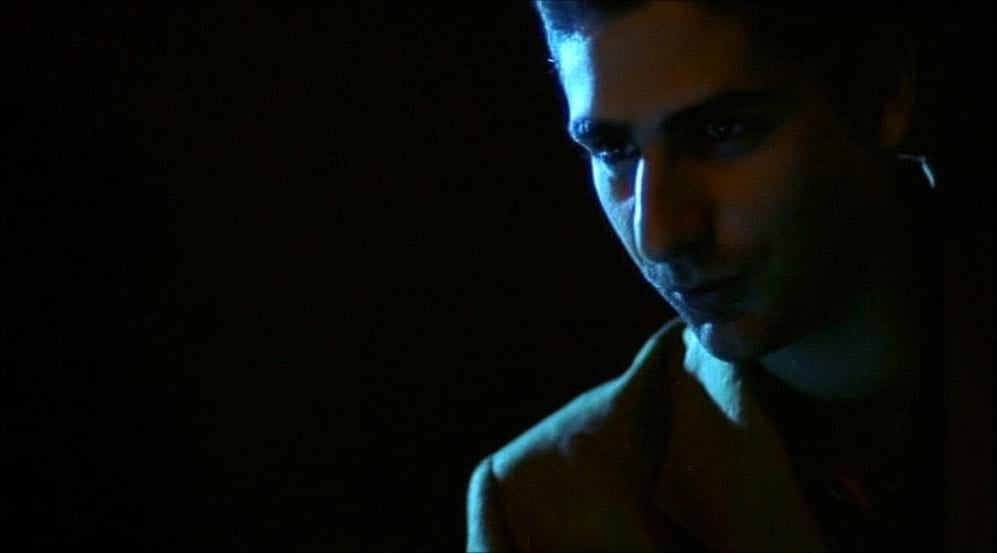
"We wanted to take a realistic approach to the lighting of the film," he reiterates. "Any expressionists or interpretive elements were done with camera movement or the use of film stocks."
With Clockers at the top of his resume, Sayeed has shown that he is a young cameraman to watch. He and Lee recently completed principal photography on their second collaboration, Girl 6, which was shot partially with Sony digital cameras. Summing up his feelings about the need for experimentation in the cinematic art, Sayeed declares, "The types of things we did on Clockers, and which Robert Richardson has been doing in the past few years, are just the tip of the iceberg; there's a world of room in terms of playing with stocks and even digitally manipulating tone, contrast and texture. If the labs are willing to push the envelope, there's no limit to what you can do. It's a very detailed process, but it is possible. I think there are a lot of stories that could be told in these different textures."
